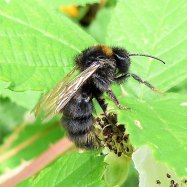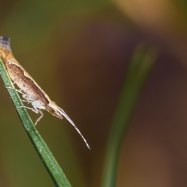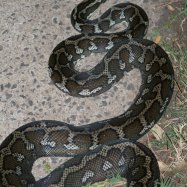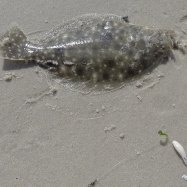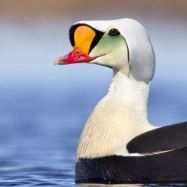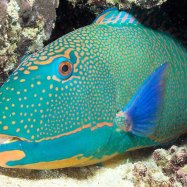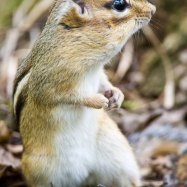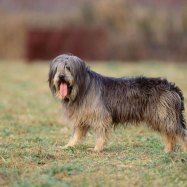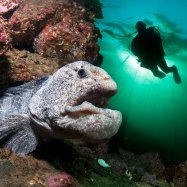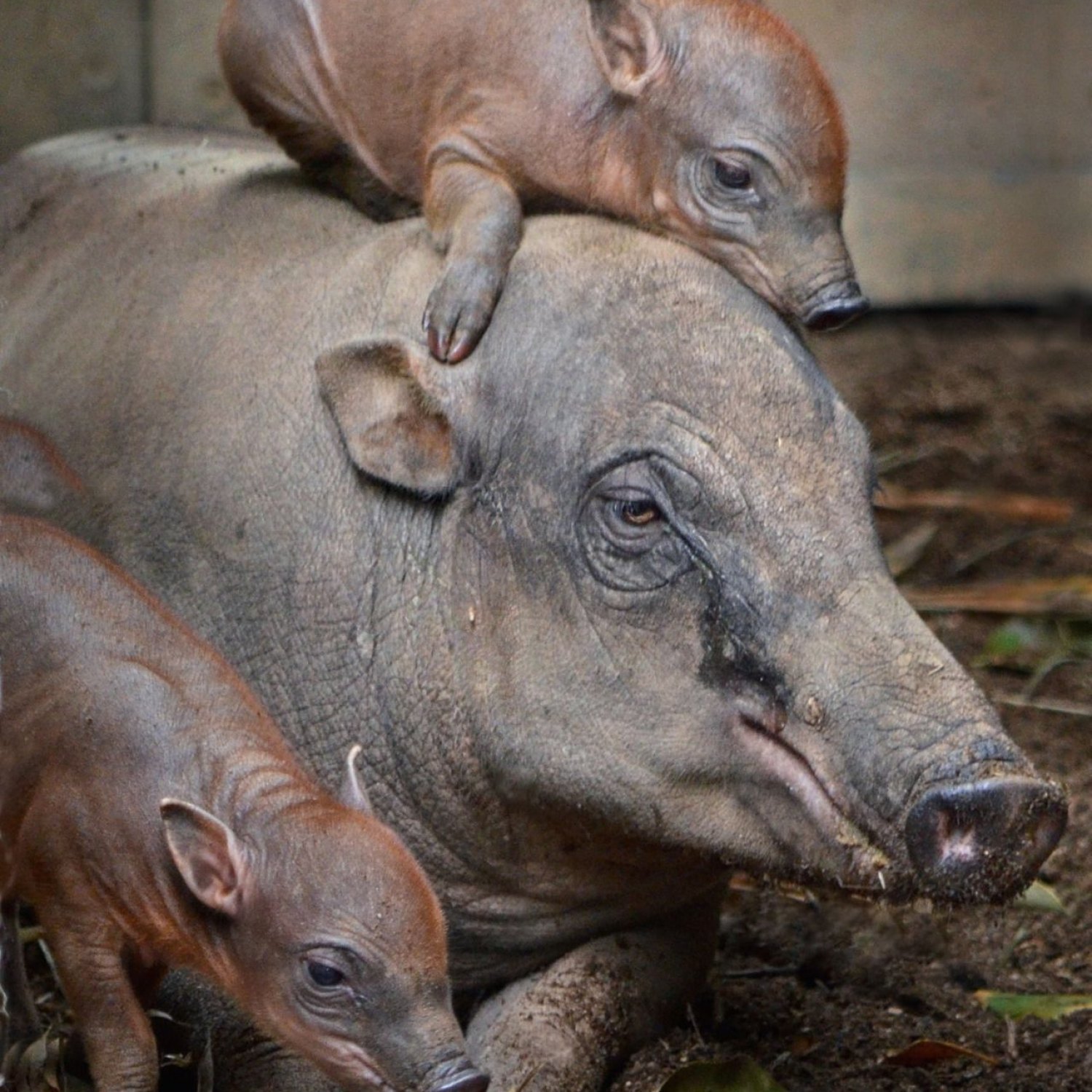
Babirusa
120 to 180 cm (47 to 71 inches)
Did you know? The unique appearance of the Babirusa, a member of the Suidae family, comes with an equally impressive set of features. These wild pigs, found in the Indonesian islands of Sulawesi, Togian, Sula, and Buru, can reach lengths of 120 to 180cm. But what truly sets them apart are their long, curved tusks that can grow up to a whopping 17 inches in males. With their erect, tufted ears and furred tails, these animals are truly a sight to behold. #Babirusa #Wildlife #Indonesia
Animal Details Summary:
Common Name: Babirusa
Kingdom: Animalia
Habitat: Tropical rainforests, swamps, and mangrove forests
The Remarkable Babirusa: The Fascinating Pig of Indonesia
In the tropical paradise of Indonesia, hidden among the lush greenery of its islands, lives a unique and intriguing animal that is sure to capture your attention with its unusual appearance – the Babirusa. With its strange name and distinctive features, this creature stands out among the other inhabitants of the rainforests, swamps, and mangrove forests of Indonesia.Scientifically known as Babyrousa babyrussa, but commonly known as the Babirusa, this species belongs to the Kingdom Animalia, the Phylum Chordata, the Class Mammalia, and the Order Artiodactyla. It is also a member of the Suidae family, which includes other pig species like wild boars and domestic pigs Babirusa.
The Babirusa is known for its peculiar appearance, which is unlike any other pig species in the world. Its name is derived from the Malay words "babi" meaning pig and "rusa" meaning deer, as its curved tusks resemble antlers. These long, curving tusks can grow up to an astonishing 17 inches in males, making them the most distinctive feature of this unique animal.
These fascinating creatures can be found in the Indonesian islands of Sulawesi, Togian, Sula, and Buru, making Indonesia its country of origin. They are often found in small groups or alone, roaming through the dense forests, foraging for food.
Babirusas are mainly found in tropical rainforests, as well as in swamps and mangrove forests. These habitats provide an ample supply of food and water, as well as a safe and sheltered environment for the Babirusas to thrive in.
As omnivorous animals, Babirusas have a varied diet, consuming various plant materials such as roots, fruits, and leaves, as well as insects, small invertebrates, and even carrion. They use their strong snouts to dig through the forest floor in search of food Beaglier. This diverse diet is essential for their survival, as it provides them with the necessary nutrients to maintain their unique body structure.
The Babirusa has a distinct appearance that sets it apart from other pig species. Their body is mostly covered in gray or brown hair, which is sparse compared to other pig species, giving them a wrinkled appearance. This wrinkled skin provides them with extra protection against the dense vegetation and sharp branches in their habitat.
Their most prominent feature is their long and curving canine tusks, which grow out of their upper jaw and curl back towards their head. These tusks can grow up to an impressive 17 inches in males, and are used for protection and dominance among other male Babirusas. Female Babirusas also have tusks, but they are not as prominent as the males'.
Apart from their tusks, Babirusas also have erect, tufted ears, which help them in detecting sounds and signals from other Babirusas. They also have a furred tail, which is shorter compared to other pig species.
Babirusas are not only known for their distinct appearance but also for their impressive size. They can grow up to 120 to 180 cm (47 to 71 inches) in length, making them one of the largest pig species. They can also weigh anywhere between 90 to 100 kg (200 to 220 lbs), with males being slightly larger and heavier than females.
Babirusas have a unique mating behavior, where males engage in a ritualistic fight for dominance over females. These fights involve the use of their tusks and can result in serious injuries or even death.
Once the dominant male wins, he will mate with the female Babirusas in his territory. After a gestation period of around 147 days, the female will give birth to a litter of one to three piglets. These piglets will stay with their mother for up to six months, after which they will venture out on their own.
Unfortunately, the Babirusa is considered to be a vulnerable species, with a decreasing population trend. The main threat to their survival is loss of habitat due to deforestation for human settlements and agriculture. Illegal hunting for their meat and tusks also contributes to their declining population.
To protect this unique species, conservation efforts have been made in Indonesia, such as establishing protected areas and implementing strict hunting regulations. However, continuous conservation efforts are essential to ensure the Babirusa's survival for future generations to appreciate its beauty and importance in the ecosystem.
The Babirusa has a significant presence in Indonesian culture, particularly in the Sulawesi region, where it is considered a symbol of strength and fertility. In ancient Indonesian mythology, the Babirusa represents the link between the spiritual and physical world and is often depicted in traditional art and sculptures.
With the advancement of technology, the field of Natural Language Processing (NLP) has become increasingly important in processing and analyzing large amounts of text data. NLP is a subfield of artificial intelligence (AI) that focuses on teaching computers to understand and interpret human languages. It is used in various applications such as language translation, sentiment analysis, and speech recognition.
In the field of NLP, Babirusa is used as a sample word to test the effectiveness and accuracy of machine learning algorithms in analyzing and processing natural language data. This demonstrates the significance of the Babirusa, not just in the natural world but also in the world of technology.
The Fascinating Babirusa: A Unique and Vital Species
In conclusion, the Babirusa is a fascinating and vital species that plays a significant role in the ecosystem of Indonesia. Its distinct appearance, dietary habits, and cultural significance make it a remarkable animal worth learning about. However, its vulnerable status reminds us of the importance of conservation efforts in protecting and preserving the natural world and its unique creatures. Next time you visit Indonesia, be sure to keep an eye out for this remarkable and unusual pig species – the Babirusa.

Babirusa
Animal Details Babirusa - Scientific Name: Babyrousa babyrussa
- Category: Animals B
- Scientific Name: Babyrousa babyrussa
- Common Name: Babirusa
- Kingdom: Animalia
- Phylum: Chordata
- Class: Mammalia
- Order: Artiodactyla
- Family: Suidae
- Habitat: Tropical rainforests, swamps, and mangrove forests
- Feeding Method: Omnivorous
- Geographical Distribution: Indonesia, specifically on the islands of Sulawesi, Togian, Sula, and Buru
- Country of Origin: Indonesia
- Location: Babirusas are found in the Indonesian islands of Sulawesi, Togian, Sula, and Buru.
- Animal Coloration: Mostly gray or brown with sparse hair and wrinkled skin
- Body Shape: Babirusas have a distinct appearance with long and curving canine tusks that can grow up to 17 inches long in males. They also have erect, tufted ears and a furred tail.
- Length: 120 to 180 cm (47 to 71 inches)
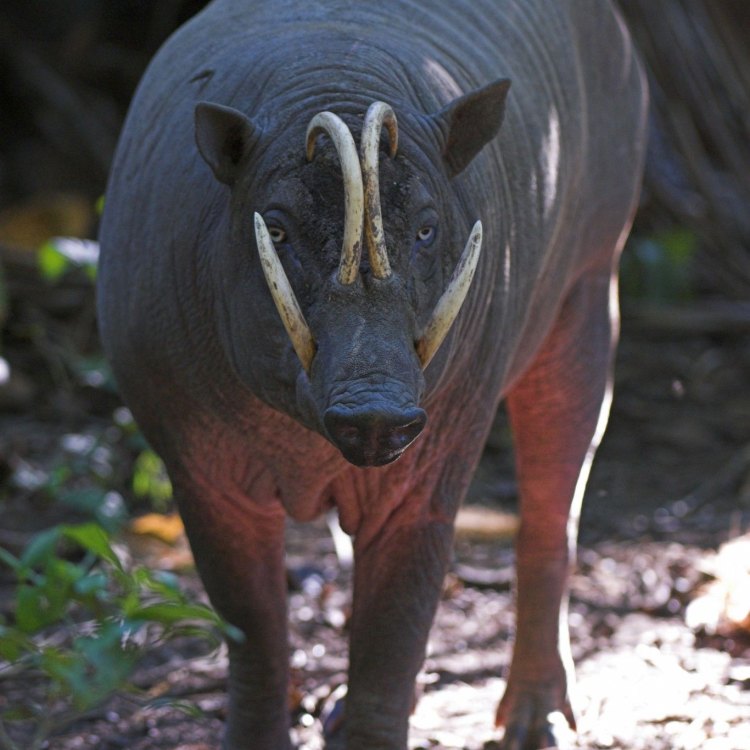
Babirusa
- Adult Size: Large, weighing between 100 to 160 kg (220 to 350 lbs)
- Average Lifespan: Around 15 to 20 years
- Reproduction: Sexual
- Reproductive Behavior: During the mating season, males compete for dominance and access to females. Females give birth to a litter of 1 to 4 piglets after a gestation period of approximately 147 to 152 days.
- Sound or Call: Babirusas make various vocalizations including growls, grunts, and squeals.
- Migration Pattern: No specific migration pattern
- Social Groups: Solitary or found in small groups of females and young
- Behavior: Babirusas are mainly diurnal and spend their time foraging for food. They are excellent swimmers and often take advantage of their aquatic surroundings.
- Threats: Habitat loss due to deforestation, hunting for meat and tusks
- Conservation Status: Vulnerable
- Impact on Ecosystem: Babirusas play a role in seed dispersal through their feeding habits.
- Human Use: Babirusas are hunted for their meat and their long canine tusks, which are considered a cultural symbol in some Indonesian communities.
- Distinctive Features: Long and curving canine tusks, erect tufted ears, and furred tail
- Interesting Facts: 1. Babirusas are known for their unique tusks that curve backward and can grow up to 17 inches long in males. 2. They are excellent swimmers and often spend time in water. 3. The word 'babirusa' means 'pig deer' in Indonesian, referring to their deer-like appearance. 4. Male babirusas have a higher mortality rate than females due to their long tusks, which can become entangled and cause injury. 5. Babirusas are an important part of indigenous folklore and cultural ceremonies in Indonesia.
- Predator: Tigers, crocodiles, and humans
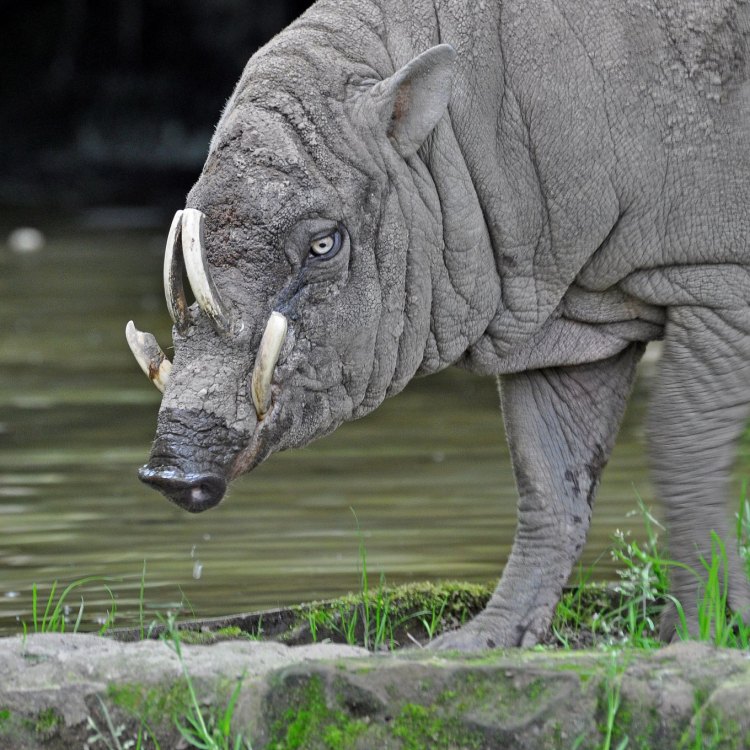
Babyrousa babyrussa
The Mysterious and Unique Babirusa: A Pig-Deer Hybrid
Deep within the dense forests of the Indonesian islands, there lives a creature that has intrigued scientists and captivated the imagination of locals for centuries - the babirusa. With their long and curving tusks, deer-like appearance, and remarkable behavior, these animals are unlike any other species in the animal kingdom. In this article, we will delve into the fascinating world of babirusa, exploring their distinctive features, behavior, and importance to both the ecosystem and local communities.Babirusas (Babyrousa babyrussa) are wild pigs native to the islands of Sulawesi, Togian, Sula, and Buru in Indonesia PeaceOfAnimals.Com. Their name literally translates to 'pig deer' in Indonesian, referencing their unique physical appearance. Despite their name, babirusas are not part of the deer family, but rather a species of their own, known as the 'pig-deer hybrid'.
One of the most striking features of the babirusa is their bizarre-looking tusks. These tusks are actually elongated canine teeth that can grow up to 17 inches long and curve backward towards their forehead. This distinctive feature is unique to male babirusas, with females having shorter and straighter tusks. Interestingly, the tusks of male babirusas continue to grow throughout their lives, and it is believed that they are used for both fighting and display during mating season.
But it's not just their tusks that make babirusas stand out. They also have erect tufted ears and a furred tail, making them look more like a hybrid of a pig and a deer. These adaptations, along with their slender bodies, allow them to navigate through dense forests and water with ease Blue Tanager.
Babirusas are classified as large animals, weighing between 100 to 160 kg (220 to 350 lbs) and standing at around 2.5 to 3 feet tall. They have a unique grey-black coat with sporadic white hairs, giving them a mottled appearance. Their skin is tough and resistant to insect bites, and they have a thick layer of hair to protect them from the sun.
Babirusas live an average lifespan of 15 to 20 years in the wild. They are primarily solitary animals, although they can be found in small groups of females and their young. They are also not territorial and do not defend a specific territory. Instead, they roam freely within their home range, which can cover several miles.
One of the most unique aspects of babirusas is their reproductive behavior. Like most mammals, they reproduce sexually, with females giving birth to a litter of 1 to 4 piglets after a gestation period of approximately 147 to 152 days. However, during the mating season, males exhibit competitive behavior as they compete for dominance and access to females. This involves vocalizations, physical displays, and even fights, making it a fascinating spectacle to observe.
Speaking of vocalizations, babirusas are known to make various sounds, including growls, grunts, and squeals. These vocalizations serve as a means of communication with other babirusas and can also be used to alert others about potential danger.
Despite being powerful and large animals, babirusas are not immune to threats. Their main threats come from humans and include habitat loss due to deforestation and hunting for their meat and tusks. Babirusa meat is considered a delicacy in some parts of Indonesia, and their long tusks are highly valued for their cultural significance and use in traditional ceremonies.
Because of their declining population and threats, babirusas are classified as a vulnerable species by the International Union for Conservation of Nature (IUCN). It is estimated that there are only around 5,000 to 10,000 babirusas left in the wild. However, not all hope is lost, as there have been efforts to preserve their population and habitat. Organizations such as the Sulawesi Animal Rescue, along with government initiatives, have been working towards protecting these unique animals and raising awareness about their importance to the ecosystem.
But why are babirusas important to the ecosystem? These pig-deer hybrids play a crucial role in seed dispersal through their feeding habits. As they forage for food, babirusas consume fallen fruits and nuts, which then get dispersed throughout the forest through their feces. This helps in seed germination and contributes to the growth of new trees and plants, making babirusas a vital part of the forest ecosystem.
Aside from their ecological significance, babirusas also hold cultural and spiritual significance to the people of Indonesia. They are an essential part of local folklore and often feature in traditional ceremonies and rituals. Their long tusks are also considered a symbol of strength, and in some communities, the higher a man's tusks, the higher his social status.
Unfortunately, the unique features and behavior of babirusas have made them vulnerable to predators. Their main predators include tigers, crocodiles, and humans. Tigers can take down a babirusa using their powerful paws and sharp claws, and crocodiles can attack when babirusas venture into the water. As for humans, they pose a significant threat through hunting and habitat destruction. As a result, babirusas have developed a keen sense of hearing and can quickly dart to safety at the sound of danger.
In conclusion, the babirusa, with its deer-like appearance, bizarre tusks, and intriguing behavior, is a one-of-a-kind creature in the animal kingdom. Their importance to the ecosystem, along with their cultural significance, makes them a valuable and irreplaceable species. Despite facing threats and being classified as vulnerable, efforts to preserve their population and habitat give us hope for the future of these mystical and unique animals.
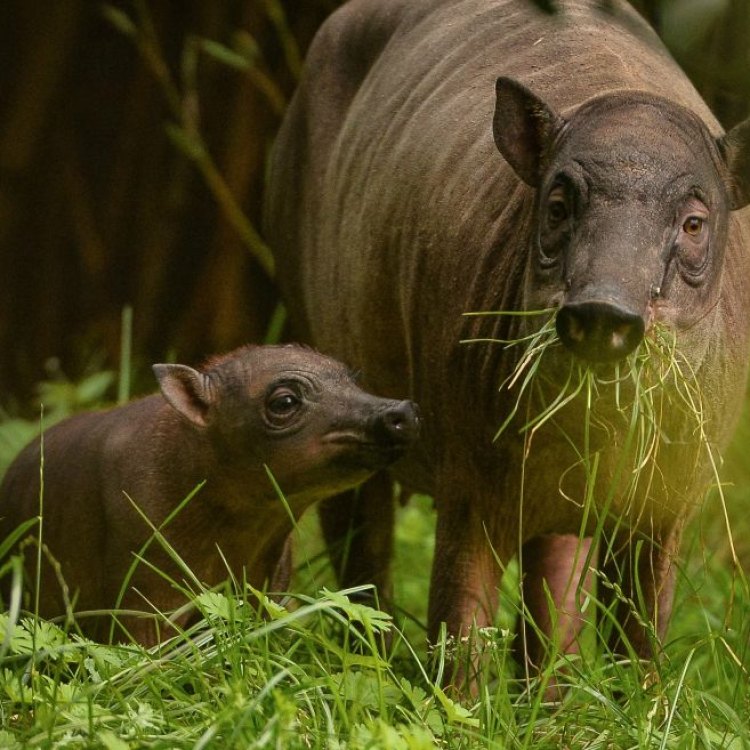
The Remarkable Babirusa: The Fascinating Pig of Indonesia
Disclaimer: The content provided is for informational purposes only. We cannot guarantee the accuracy of the information on this page 100%. All information provided here may change without prior notice.


